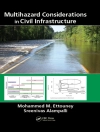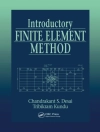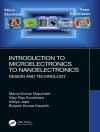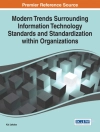The ‘materials nexus’ represents the role or connection of materials in building the path for greener energy and sustainable environment. This two-volume set covers the state-of-the-art of materials technology for greener energy and sustainable environment, including current issues, anticipated demands and future opportunities. Each chapter demonstrates how advanced materials can be selected and prepared for device applications, providing a vital link between the science and the engineering applications. Technologies covered include functional electrode materials in energy harvesting including solar cells, solar water oxidation, fuel cells, supercapacitors, batteries and sensors, and environmental remedial applications. This reference text is highly useful for students, researchers and companies who are searching for suitable materials for energy and environmental applications.
Key Features
- Covers the cutting edge in materials technology for greener energy and sustainable environment, including current issues, anticipated demands, and future opportunities.
- Introduces the fundamentals and applications in energy conversion, generation, storage, and environmental remediation.
- Discusses the basic principles and mechanism behind materials selection.
- Provides a framework for the functional and technological aspects of the materials to guide researchers in their corresponding engineering applications.
- Demonstrates how advanced materials can be selected and prepared for device applications.
Tabela de Conteúdo
Chapter 1: An Introduction to the role of materials in energy-environment nexus
Chapter 2: Flexible Free–standing Multifunctional Composites for Energy Harvesting Applications
Chapter 3: Copper based metal oxide nanocomposites towards solar water oxidation
Chapter 4: Carbon based aerogels for photoelectrocatalytic CO2 reduction into solar fuels
Chapter 5: Structural, Dielectric and electrochemical properties of rare earth co-doped Li Mn2O4 electrode materials for energy storage applications
Chapter 6: Flexible 2D advanced materials for Lithium-Ion Battery storage devices
Chapter 7: Recent advances on the cathode materials for intermediate solid oxide fuel cells
Chapter 8: Role of Sacrificial Agents in Water Splitting
Chapter 9: Recent Advancements in Tuning Electronic Structures of Transitional Metal Oxides for Electrocatalytic Oxygen Evolution Reaction
Chapter 10: Recent advances of 2D nanomaterials and their environmental application
Chapter 11: Sensors for Environmental Analysis
Chapter 12: Recent trends and materials used for environmental monitoring and applications
Sobre o autor
Prof. Mangalaraja Ramalinga Viswanathan is a Full Professor in the Faculty of Engineering and Sciences, Universidad Adolfo Ibáñez, Chile. He was previously at the University of Concepcion for 18 years, where he also worked as the Director of International Relations from 2018–2019 and as the Director for the Department of Materials Engineering from 2010–2016.
Dr. Arulraj Arunachalam is an Assistant Professor in the Departamento de Electricidad at Universidad Tecnológica Metropolitana, Santiago, Chile. He was previously at the Faculty of Engineering and Sciences at the Universidad Adolfo Ibáñez, Chile, where he worked as the FONDECYT Postdoctoral Researcher. Dr. Arulraj gained his Ph.D. in Technology (Energy) from Anna University, India.
Dr. Radhamanohar V.N. Aepuru is an Assistant Professor in the Department of Mechanical Engineering, Universidad de Chile. He previously worked as an Assistant Professor in Department of Mechanical Engineering at Universidad Tecnológica Metropolitana, Chile. Dr. Aepuru gained his Ph.D. in Materials Engineering from Defence Institute of Advanced Technology (D.U.), Ministry of Defence, Govt. of India.
Prof. Chan Siew Hwa is a President’s Chair in Energy and Full Professor at Nanyang Technological University (NTU), Singapore. He joined NTU in 1991 after obtaining his Ph D and working as a post-doctoral researcher at Imperial College London. He leads the hydrogen and fuel cell research at Energy Research Institute at NTU. He has received several awards, and is listed among the World’s Most Influential Scientific Minds by Thomson-Reuters.












